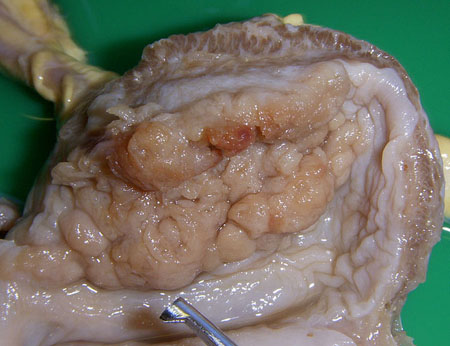What is a bladder tumour?
A bladder tumour is a benign or cancerous tumour of the bladder or urethra of cats. There are several types of bladder tumours in cats, transitional cell carcinoma (TCC) is the most common, other types include benign mesenchymal tumours, squamous cell carcinoma, rhabdomyosarcoma, and lymphoma.
The exact etiology is unknown. There is a higher incidence in humans who work in chemical industries and it is speculated chemicals in flea and tick products, as well as environmental pollutants, may increase the incidence in cats. Obesity is another factor, as fat stores chemicals, which are slowly excreted out of the body via the urine.
The average age of cats to develop bladder cancer is 8-9 years.
Bladder cancers are often quick to spread to other parts of the body, and therefore it is crucial that early diagnosis is made to increase the cat’s chances of survival.
Symptoms
- Hematuria (blood in the urine)
- Increased thirst and urination
- Lethargy
- Straining to urinate
- Inability to urinate due to a urinary blockage
- Pain when urinating
- Abdominal pain
- Weight loss
- Genital licking
If cancer has spread, other symptoms may present depending on the location, this can include cough (if spread to lungs) or lameness (bone metastasis).
Diagnosis

Image courtesy RDSVC pathology, Flickr
Symptoms of bladder cancer are very similar to other disorders of the urinary tract such as cystitis, urinary crystals/stones and urinary tract infection. The veterinarian will perform a complete physical examination of your cat, which will include a rectal exam.
Diagnostic workup:
- Urinalysis: To check for tumour cells and infection, which can often run concurrently with bladder cancer.
- Biochemical profile and complete blood count: To evaluate the cat’s overall health and fitness to undergo surgery.
- Imaging studies: Ultrasound or x-ray to evaluate for tumours in the bladder, check regional lymph nodes and look for signs of metastases to the lungs.
- Contrast x-ray: to evaluate the extent of the tumours.
- Veterinary bladder tumour antigen test (V-BTA): A screening test that checks the urine for antibodies for tumour antigens.
- Cystoscopy: A flexible tube with a camera is inserted into the urethra so that the bladder can be visualised. A tissue sample may be taken at this time which will provide a definitive diagnosis of bladder cancer.
Treatment
- Surgical removal if the tumour is in a favourable location and in some cases, chemotherapy as a follow-up. Unfortunately, surgery for
- Laser therapy to remove or debulk (reduce the size of) the tumour.
- The nonsteroidal anti-inflammatory drug piroxicam (Feldene) shrinks and/or inhibits the growth of bladder tumours.

